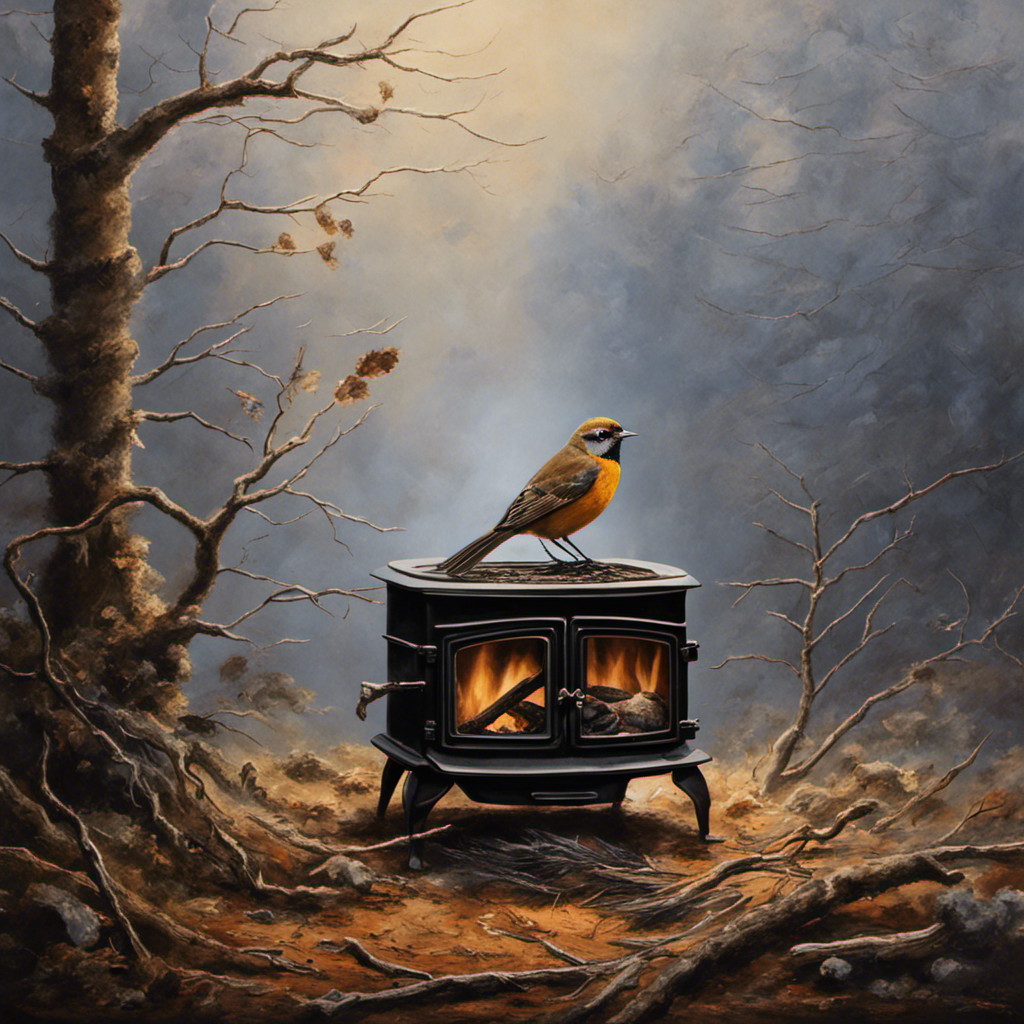I can’t wait to share a little secret with you: Installing a fan on a wood stove is simpler than you may realize. With just a few simple steps, you’ll be able to experience the cozy warmth and improved airflow once more.
From checking the power source to troubleshooting the fan blades, I’ll guide you through the process with technical precision.
So, grab your tools and get ready to restore your wood stove fan to its former glory.
Let’s dive in!
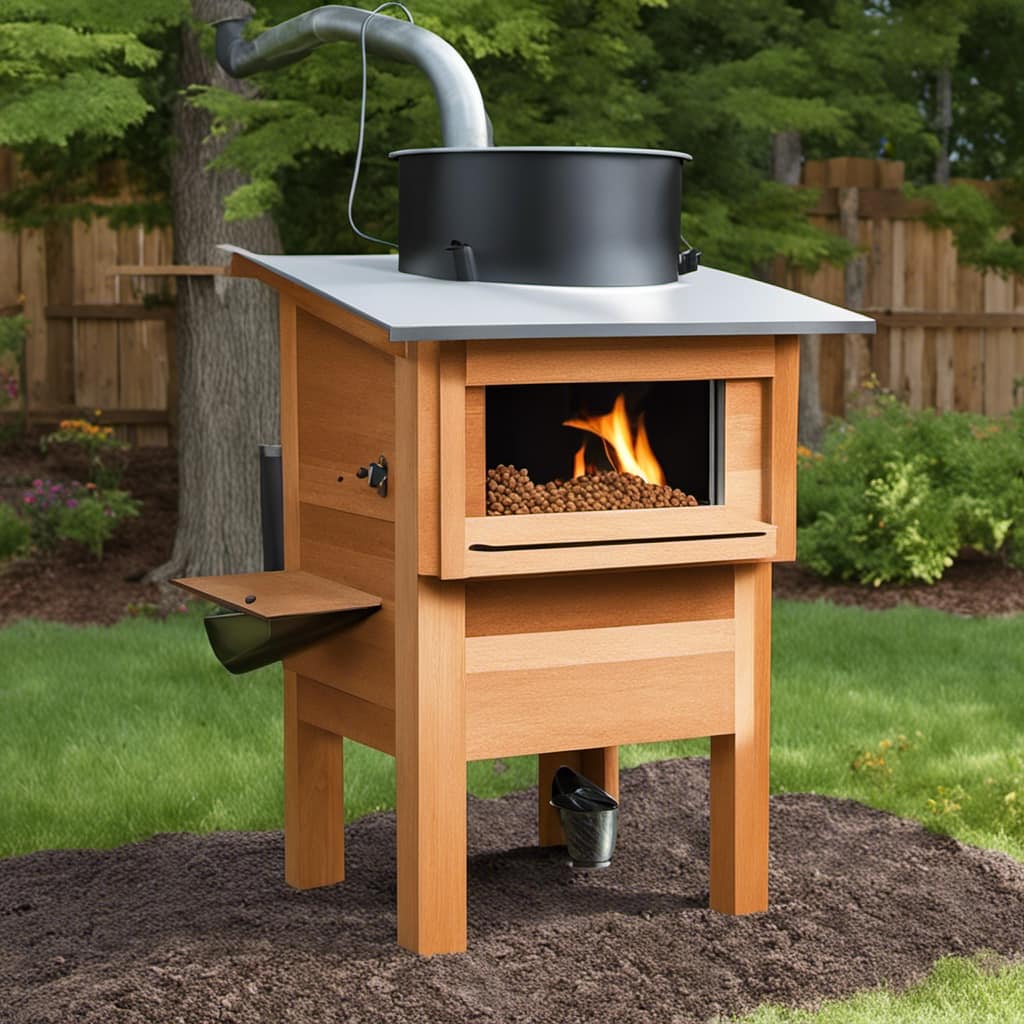
Key Takeaways
- Check the power source, ensuring electrical connections are secure and properly connected
- Clean and lubricate the fan to remove dust and debris buildup and reduce friction and noise
- Troubleshoot any electrical issues before replacing the fan motor
- Visually inspect fan blades for cracks, chips, or misalignment and adjust or replace them as necessary
Checking the Power Source
I’m going to check the power source to see if the fan is getting enough electricity. Power supply issues can often be the culprit when a fan on a wood stove isn’t working properly.
To begin, I’ll first ensure that the electrical connections are secure and properly connected. I’ll inspect the power cord for any visible damage, such as frayed wires or loose connections.
Next, I’ll use a multimeter to measure the voltage at the power outlet. If the voltage is below the recommended range, it could indicate a problem with the power supply. In such cases, it may be necessary to consult an electrician to resolve any power supply issues.
Cleaning and Lubricating the Fan
After checking the power source, it’s important to regularly maintain the fan by cleaning and lubricating it to ensure optimal performance. Here are some maintenance tips to keep your fan running smoothly:

Clean the blades: Dust and debris can accumulate on the fan blades, causing them to become unbalanced and reducing airflow. Use a soft brush or cloth to gently remove any dirt or dust buildup.
Lubricate the motor: Over time, the motor bearings may become dry, leading to increased friction and noise. Apply a few drops of lubricating oil to the motor bearings to keep them running smoothly.
Check the wiring: Inspect the fan’s wiring for any loose connections or frayed wires. Tighten any loose connections and replace any damaged wires to prevent electrical issues.
Test the speed settings: If your fan has multiple speed settings, test each one to ensure they’re functioning properly. If any speed setting isn’t working, it may indicate a problem with the fan’s internal components.

Replacing the Fan Motor
To fix the issue with the fan motor, I’ll need to purchase a replacement and install it carefully.
When it comes to fan motor replacement, it’s essential to troubleshoot any electrical issues that may be causing the problem. Before proceeding, ensure that the power supply is disconnected.
Start by removing the screws that secure the fan cover and carefully detach it from the unit. Next, locate the fan motor and disconnect any wires connected to it. Take note of their positions to avoid confusion during reinstallation.
After removing the old motor, insert the new one in its place, ensuring it fits securely. Reconnect the wires according to their original positions, and then reattach the fan cover.
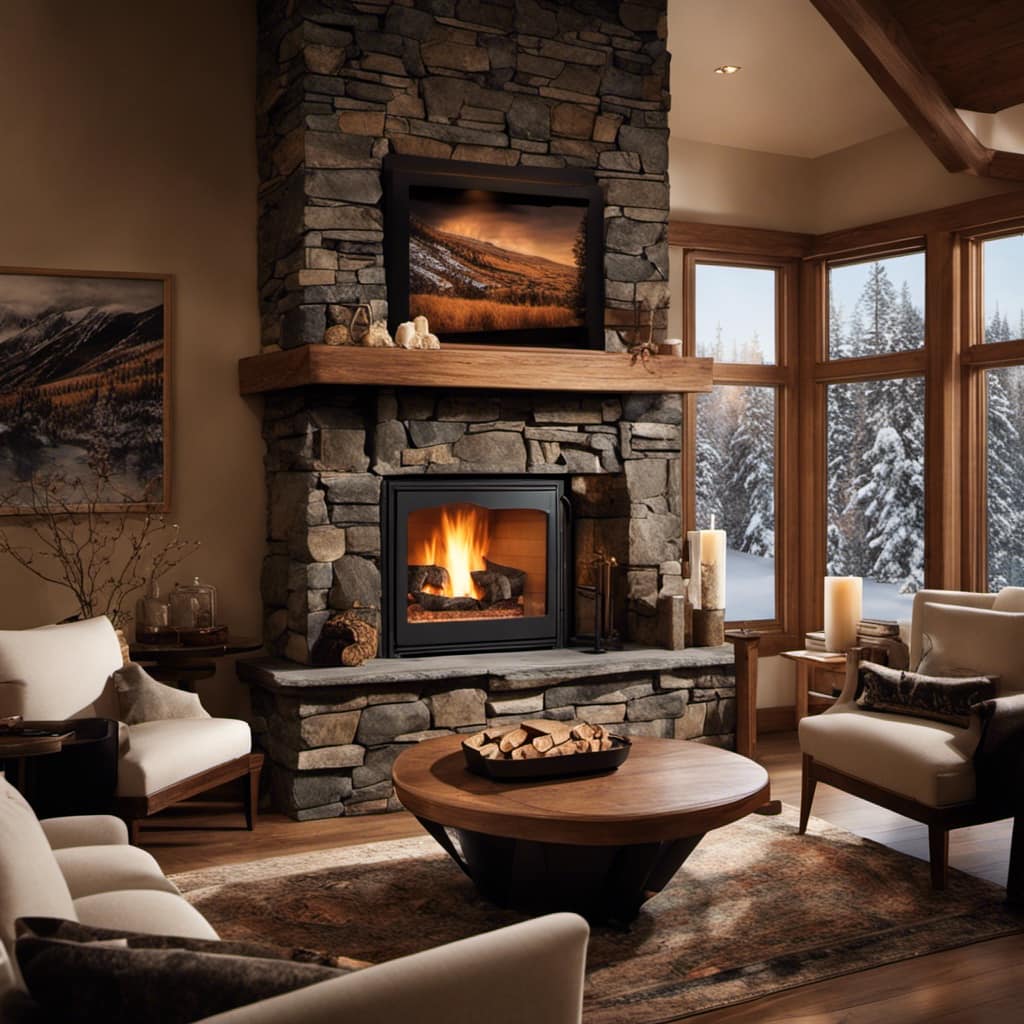
Lastly, connect the power supply and test the fan to ensure it’s working properly.
Troubleshooting Fan Blades
While troubleshooting fan blades, I’ll carefully inspect them for any signs of damage or misalignment. This is an important step in identifying and resolving issues with fan noise.
Here are four key points to consider when troubleshooting fan blades:
Visual Inspection: I’ll visually examine each blade for cracks, chips, or any other visible damage. Additionally, I’ll check for any bending or misalignment that could cause the fan to produce noise.
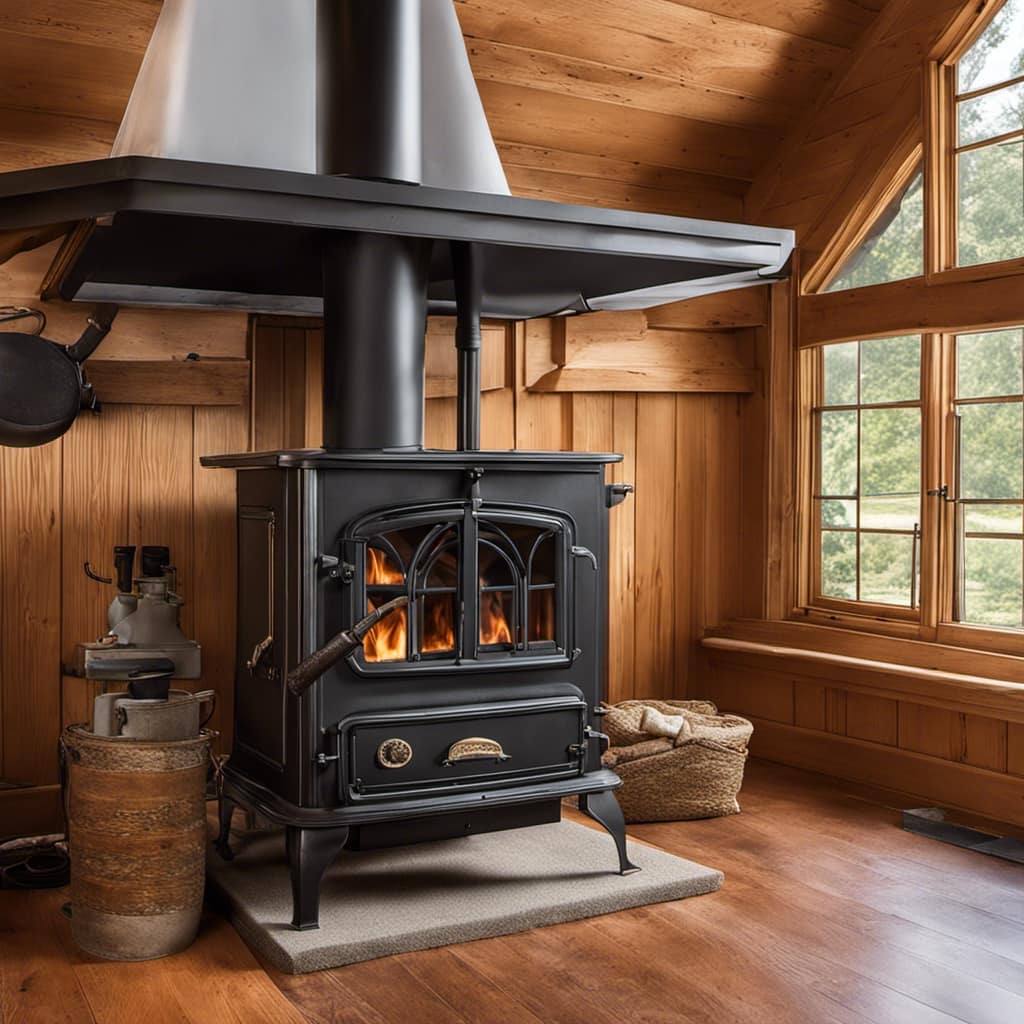
Balance Check: It’s crucial to ensure that the fan blades are properly balanced. I’ll use a balance kit or a simple DIY method like attaching weights to the blades to achieve balance.
Cleaning: Dust and debris buildup can also contribute to fan noise. I’ll clean the blades thoroughly to eliminate any obstructions.
Replacement: If the blades are severely damaged or can’t be balanced, fan blade replacement may be necessary. I’ll carefully select and install new blades to restore proper functionality.
Adjusting the Fan Speed
Can I increase or decrease the fan speed using a simple switch or dial? This is a common question when it comes to adjusting the fan speed in various appliances. The answer depends on the specific fan and its design. Some fans come with a built-in switch or dial that allows you to easily change the speed, while others may require additional modifications. Increasing the efficiency and reducing the noise of a fan can be achieved through various methods such as lubricating the motor, cleaning the blades, or adding a fan speed controller. By incorporating these techniques, you can optimize the performance of your fan and create a more comfortable environment.
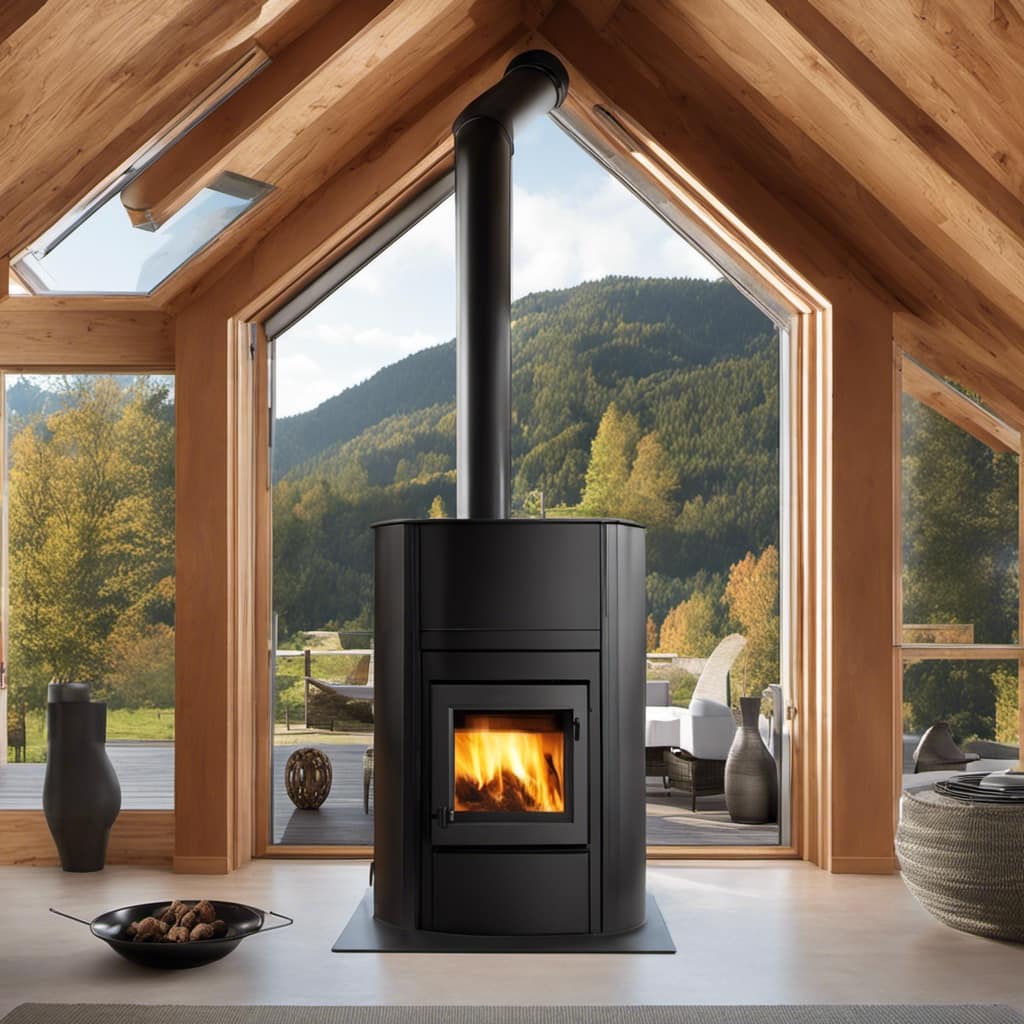
| Method | Description | Emotional Response |
|---|---|---|
| Lubricating the Motor | Applying lubricant to the fan motor to reduce friction and noise. | Satisfaction and relief, knowing that the fan will operate smoothly and quietly. |
| Cleaning the Blades | Removing dust and debris from the blades to improve airflow and reduce noise. | A sense of cleanliness and freshness, as well as improved air quality. |
| Adding a Fan Speed Controller | Installing a device that allows you to adjust the fan speed according to your preference. | A feeling of control and customization, tailoring the fan’s performance to your specific needs. |
What Are some Common Issues with Fans on Wood Stoves and How Can They Be Fixed?
Some common issues with using fan on wood stove are dust accumulation, motor malfunction, and uneven airflow. To fix them, regularly clean the fan and motor, and ensure the fan blades are balanced and not damaged. Also, check for any obstructions in the airflow path and adjust the fan’s positioning if needed.
Frequently Asked Questions
Can I Use Any Type of Fan for My Wood Stove, or Are There Specific Requirements?
Yes, you can use different types of fans for your wood stove, but there are specific requirements to consider. It’s important to weigh the pros and cons of alternative fan options to ensure optimal performance and safety.
How Often Should I Clean and Lubricate the Fan on My Wood Stove?
Cleaning and lubricating the fan on a wood stove should be done regularly to ensure optimal performance. The cleaning frequency and proper lubrication will depend on the specific model and usage, so consult the manufacturer’s guidelines for detailed instructions.
Are There Any Safety Precautions I Should Take When Replacing the Fan Motor?
When replacing the fan motor on a wood stove, it is important to take safety precautions. Ensure the stove is turned off and cool before starting. Wear protective gloves and eyewear. Follow manufacturer’s instructions and disconnect power source.
What Should I Do if the Fan Blades on My Wood Stove Fan Are Bent or Damaged?
If the fan blades on my wood stove fan are bent or damaged, I need to repair them. This involves carefully straightening or replacing the blades. I will ensure I find the correct replacement blades for my specific fan model.

Can I Adjust the Fan Speed on My Wood Stove to Be Higher or Lower Than the Default Setting?
Yes, you can adjust the fan speed on your wood stove. Troubleshooting fan issues may require adjusting the fan speed higher or lower than the default setting to ensure optimal performance.
Conclusion
In conclusion, by following these precise and knowledgeable steps, you can easily fix a fan on your wood stove.
With a little cleaning, lubricating, and troubleshooting, you’ll have your fan spinning like a turbocharged engine in no time.
So don’t let a malfunctioning fan dampen your wood stove experience. Take charge and get that fan working flawlessly, ensuring optimal airflow and heat distribution throughout your living space.
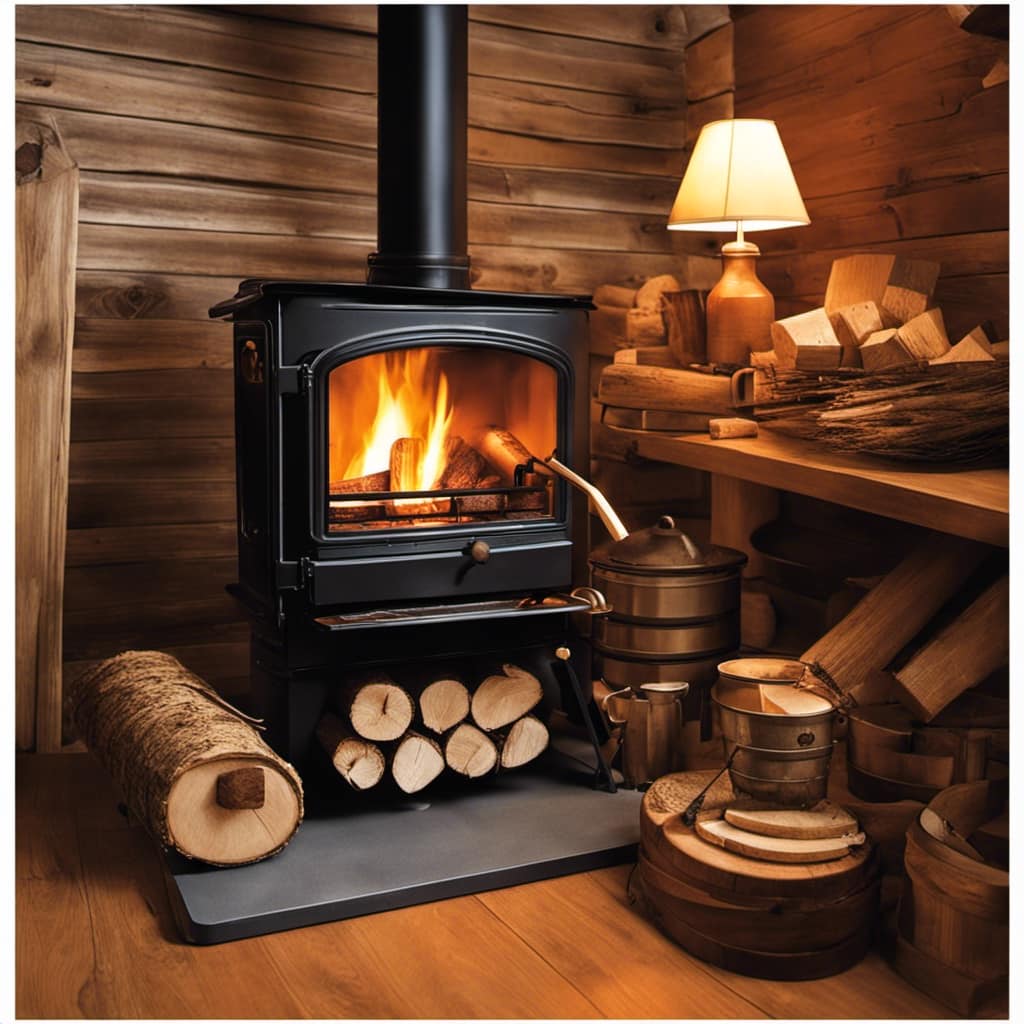
Get ready to feel the warmth like never before!
Growing up surrounded by the vast beauty of nature, Sierra was always drawn to the call of the wild. While others sought the comfort of the familiar, she ventured out, embracing the unpredictable and finding stories in the heartbeat of nature.
At the epicenter of every remarkable venture lies a dynamic team—a fusion of diverse talents, visions, and passions. The essence of Best Small Wood Stoves is crafted and refined by such a trio: Sierra, Logan, and Terra. Their collective expertise has transformed the platform into a leading authority on small wood stoves, radiating warmth and knowledge in equal measure.





